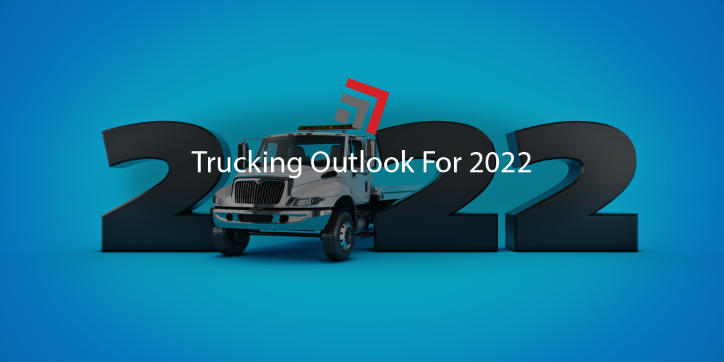As we look to the rest of 2022, we must make notice of the trucking outlook for the rest of the year. The power of automated software and AI, trucker parking and detention delays, and retaining and recruiting drivers are all trends for the trucking industry in 2022. Now, you may not be surprised about one or more of these trends for this current year, as a couple of these topics have been constant issues the last couple of years or more.
The Power of Automated Software and AI
Whether you like it or not, more fleets are prioritizing the adoption, implementation, and the use of fully automated software to help improve the supply chain planning and being informed of real-time route optimization.
One of the biggest questions with automated software and AI is how will these tools keep fleets realistically on pace with demand? But it’s not just automated software and AI that can help answer that question, drivers need to be interested and “buy-in” to the onboarding process and technology deployments, Supply Chain Brain stated.
There are many benefits for incorporating automated software into the workforce processes including but not limited to:
- Reduced driver attrition
- Better and more effective customer service
- Increase in profits
- Less inconsistent gaps in communication, compliance and planning
Trucker Parking and Detention Delays
It’s no secret that truckers trying to find a safe and efficient place to park has been an issue for some time, as well as facility and detention delays.
More parking for truckers comes with a more productive, safe and resilient workforce. Drivers spend on average around an hour of driving time every day trying to find safe parking, and 58% of drivers even said they have parked in unauthorized places at least three times a week, because of the lack of parking, FleetOwner reported. Recently, the American Trucking Associations and the Owner-Operator Independent Drivers Association wrote a letter to the U.S. Secretary of Transportation to push for prioritization of the nation’s truck parking capacity.
Congestion around the unloading of cargo and staging and the process of moving containers from port to their next destination has been a constant battle that has impacted drivers. According to Supply Chain Brain, long haul drivers are spending 6.5 hours a day driving, despite regulations permitting 11 hours of driving per 24-hour period. With that comes less efficient drivers as excess detention time stops drivers from maintaining a steadier, more productive delivery schedule. Supply Chain Brain said it best, “drivers sit in hours-long lines at ports not built to handle the current level of shipping volumes.”
Retaining and Recruiting Drivers
Driver retention continues to be an issue plaguing the industry, as turnover for drivers in fleets (with more than $30 million of annual revenue) reached 92% – which is roughly 9 out of every 10 drivers will no longer be working for that company, reported Supply Chain Brain. Trucker pay continues to be a top issue for commercial drivers. Though many companies have increased trucker pay throughout the pandemic, including bonuses or higher pay rate increases.
Some argue that driver retention is more important than driver recruitment, and a lot of that comes down to the driver experience; how is the driver pay? Does the driver feel heard at their company? What is the lifestyle like outside of work for the driver – do they have enough time to see their families?
Improving the driver experience and improving the driver training and career education programs, fleets will see a variety of benefits, as Supply Chain Brain mentions:
- More efficient transportation
- Improved customer service
- Enhanced company reputation
- Increased profits
The power of automated software and AI, improving trucker parking and facility and detention delays, as well as retaining and recruiting your drivers are all big topics and tasks as we embark on the rest of 2022. Should you have any questions or comments, please reach out to a team member today!



Recent Comments